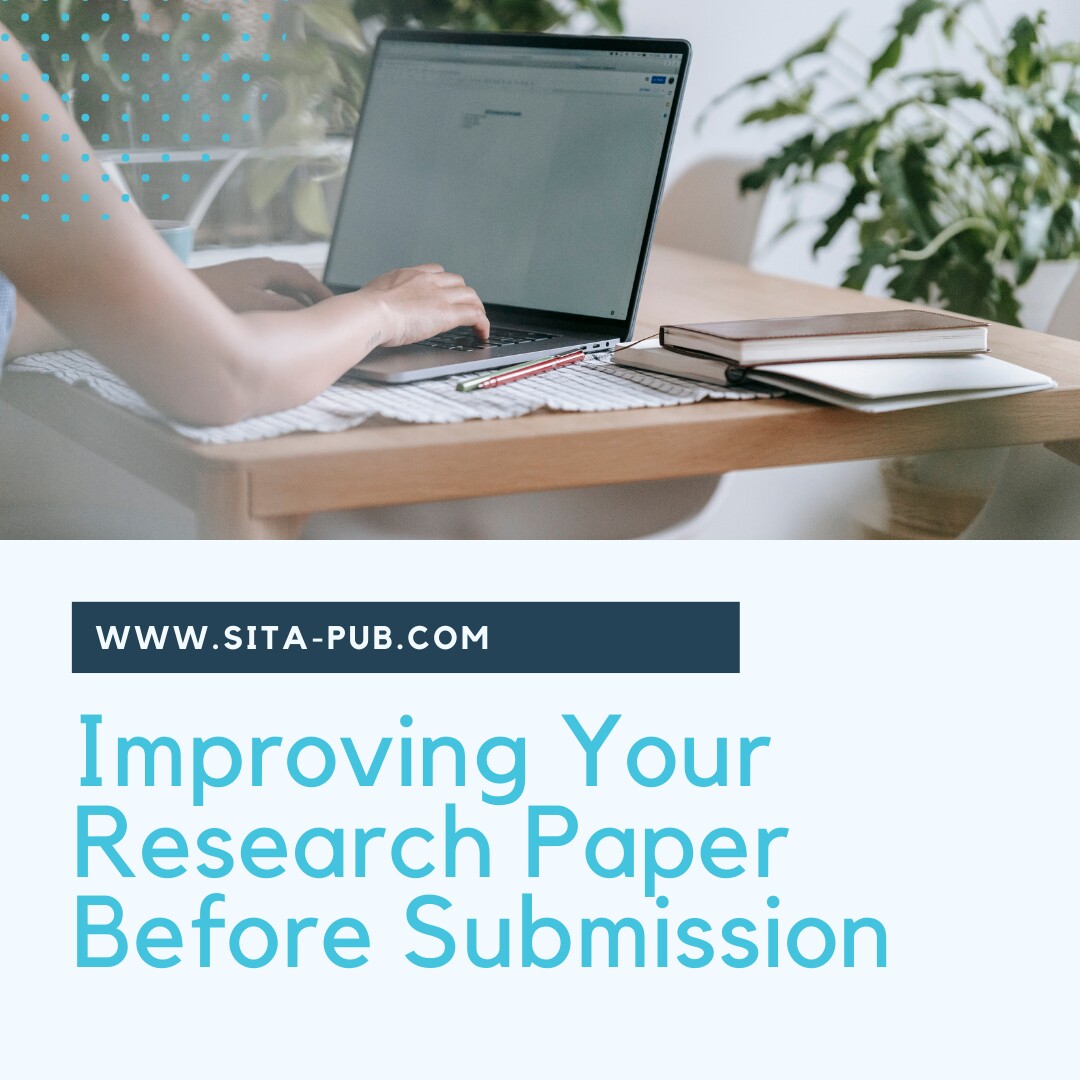Improving Your Research Paper Before Submission


Submitting a research paper is a critical step in your academic journey. Ensuring your paper is of high quality can enhance your chances of acceptance and maximize its impact. This guide will help you improve your content and ensure proper editing and formatting.

Title:
The title is the first thing readers see. It should be clear and reflect what your research is about. Make it interesting and informative.
Tip: Use strong verbs and simple words. If necessary, add a subtitle for clarity. Avoid complex language to make it accessible.
The abstract summarizes your research in about 150-250 words. It should clearly explain your goals, methods, results, and conclusions. Readers should grasp your work without reading the entire paper.
Tip: Write the abstract after finishing the paper to ensure it aligns with your content. Use clear language and include relevant keywords to help others find your work.
This section outlines the research problem and its significance. Start with a broad context and narrow down to your specific questions and goals.
Tip: Begin with an interesting fact or question to grab attention. Clearly state the purpose of your research.
This part shows how your research fits within existing studies. Include recent literature to demonstrate awareness of current trends.
Tip: Organize the review by themes or timelines. Use headings to guide readers and explain how your work contributes new knowledge.
Describe how you conducted your research. Include details about tools, techniques, and procedures so others can replicate your study.
Tip: Be specific about sample sizes and data collection methods. Use bullet points for clarity.
Present your findings clearly. Use tables, graphs, and charts to make data easier to understand.
Tip: Highlight the main findings first. Ensure all visuals are labeled and provide explanations.
Interpret your results and connect them to your research questions. Discuss their importance and any limitations.
Tip: Start with a summary of your findings, then explain their significance. Suggest areas for future research.

If English is not your first language, consider hiring a professional editor. This can enhance the clarity of your writing.
Tip: Choose editors familiar with your field to ensure they understand your terminology and context.
Plagiarism can damage your credibility. Ensure you properly cite all sources.
Tip: Use software like iThenticate to check for unintentional similarities with other works and maintain originality.
Journal Requirements: Each journal has specific formatting rules. Review the journal’s guidelines carefully and follow them.
Tip: Create a checklist based on these requirements to ensure you don’t miss anything important.
Cover Letter: A strong cover letter is essential. It should explain the significance of your research and why it fits the journal.
Tip: Personalize your cover letter for each journal. Mention articles from the journal that relate to your work.
Supplementary Materials: Include any additional materials, like data sets or figures, if required. Follow the journal’s rules for these materials.
Improving your research paper before submission involves careful work on both content and editing. By focusing on clear writing and presentation, you increase your chances of acceptance and ensure your research makes a meaningful impact. Take the time to apply these strategies. A well-prepared submission demonstrates your commitment to quality research and can lead to future success in your academic career. Investing effort into your paper will help you share your valuable insights with the academic community.

Professional Editing: Enhance clarity and coherence in your research paper.
Expert Formatting: Ensure adherence to specific journal guidelines for submission.
Tailored Services: Get personalized support to highlight the significance of your work.
Boost Confidence: Submit a polished paper that reflects your dedication to quality research.
Achieve Your Goals: Partner with us to make a meaningful impact in your academic field.
Contact SITA Academy today to elevate your research paper and increase your chances of acceptance!
If you have any questions, inquiries, or would like to learn more about our services, please don't hesitate to reach out to us. Our dedicated team is ready to assist you.